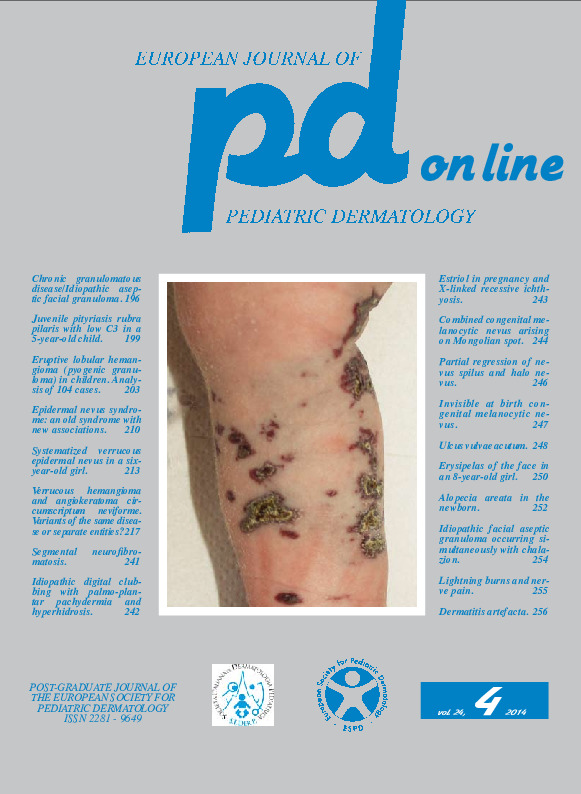Erysipelas of the face in an 8-year-old girl.
Downloads
How to Cite
Brzezinski P., Chiriac A.E., Pinteala T., Chiriac A. 2014. Erysipelas of the face in an 8-year-old girl. Eur. J. Pediat. Dermatol. 24 (4):250-51.
pp. 250-251
Abstract
Erysipelas is a form of cellulitis with striking superficial inflammation, typically affecting the lower limbs and the face. Erysipelas occurs in old people and in small children, as well as in immunocompromised persons (HIV infection, chemotherapy or corticosteroid therapy). Group A (Streptococcus pyogenes) and G (Streptococcus dysgalactiae subsp. equisimilis) β-hemolytic streptococci are the predominant causative agents of erysipelas; also group B and C streptococci and Staphylococcus aureus are involved (6, 7). Results are sometimes controversial: erysipelas caused by Staphylococcus aureus being more prevalent in other studies (1). In children Haemophilus influenzae was a frequent cause before the introduction of the Haemophilus influenzae type B vaccination (3). Genetic factors have been recently implicated as important determinants of susceptibility to infectious diseases (2, 5). A risk factor for erysipelas in this case was represented by an excoriation due to scratching of the left retroauricular region. A preceding upper respiratory infection was reported by the mother a few days before hospitalization. The mainstay of the diagnosis is based on clinical picture, although some disorders must be taken into consideration for differential diagnosis, especially erythema migrans (Lyme disease stage I). The latter was the first diagnosis suspected by the general pediatrician of the patient, but specific serology proved to be negative.Keywords
Erysipelas

